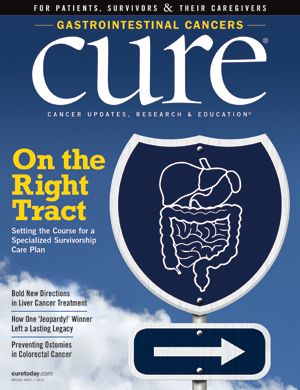Publication
Article
CURE
Knowledge is Power: Especially if it can help prevent disease
Author(s):
Understanding liver cancer is a crucial step toward the prevention of this rare condition.
MANY PEOPLE ARE QUITE unaware of the facts about liver cancer, but there are aspects about the disease that everyone should consider as this rare disease becomes more common in certain segments of the population.
Liver cancer is a threat not only because its incidence, as well as deaths from the disease, are rising when rates for many others cancers are falling. It’s also a threat because it is silent in its early phases. Importantly, some cases of liver cancer could be preventable, and many others arise due to causes that are at least diagnosable, meaning that some patients could undergo surveillance and catch the disease in its earliest stages, when it’s the most curable.
In the past, liver scarring, or cirrhosis, that could lead to cancer was typically seen in heavy drinkers of alcohol. That issue remains, but, in recent years, the incidence of obesity, which can lead to fatty liver and subsequent inflammation and scarring, is causing a spike in liver cancer. Hispanics are at particular risk, due to their higher likelihood of carrying a gene that promotes fat in the liver, and people of other ethnicities that have elevated obesity rates, including Native Americans, are also being hit hard. Luckily, diet modifications and exercising can go a long way toward prevention of this condition.
In its largest numbers, liver cancers arise from infection with hepatitis B or C. This is important to understand, since many of us carry one of these viruses without even knowing it. Vaccinating infants at birth against the “B” version of the virus is crucial, and screening people at the highest risk for the “C” version (including those who have injected drugs, are at risk for sexually transmitted disease, or are “Baby Boomers”) is also extremely important, since treatments are available to eradicate the virus and reduce the risk of liver cancer.
Short of a 100 percent prevention rate, we must look with hope toward newer and novel treatment strategies. Luckily, some look very promising. In rare patients, liver transplant can bring about a cure for the disease if it has not spread beyond the liver but is too large for surgical resection alone. Alternatively, innovations in surgery, radiation and the delivery of chemotherapy and other agents into the hepatic arteries (chemoembolization) can work well for some patients. Generating a lot of interest in the scientific community are targeted drugs; with one already in use, another, Stivarga (regorafenib), seems poised for FDA approval. Finally, immunotherapy drugs, which are being studied in clinical trials, could easily become the new frontier in liver cancer treatment. Most of these treatments are not curative, but can hold cancers in check — sometimes for prolonged periods.
With further advancements in the clinic and comprehension in the community about the causes of this disease, we should finally be able to make some headway in reducing the incidence of liver cancer. For those who do develop it, the field is moving in the right direction — but we need to understand how to best monitor those at risk and continue to innovate in the development of therapeutic approaches.
DEBU TRIPATHY, M.D.
Editor-in-ChiefProfessor of MedicineChair, Department of Breast Medical OncologyThe University of Texas MD Anderson Cancer Center






